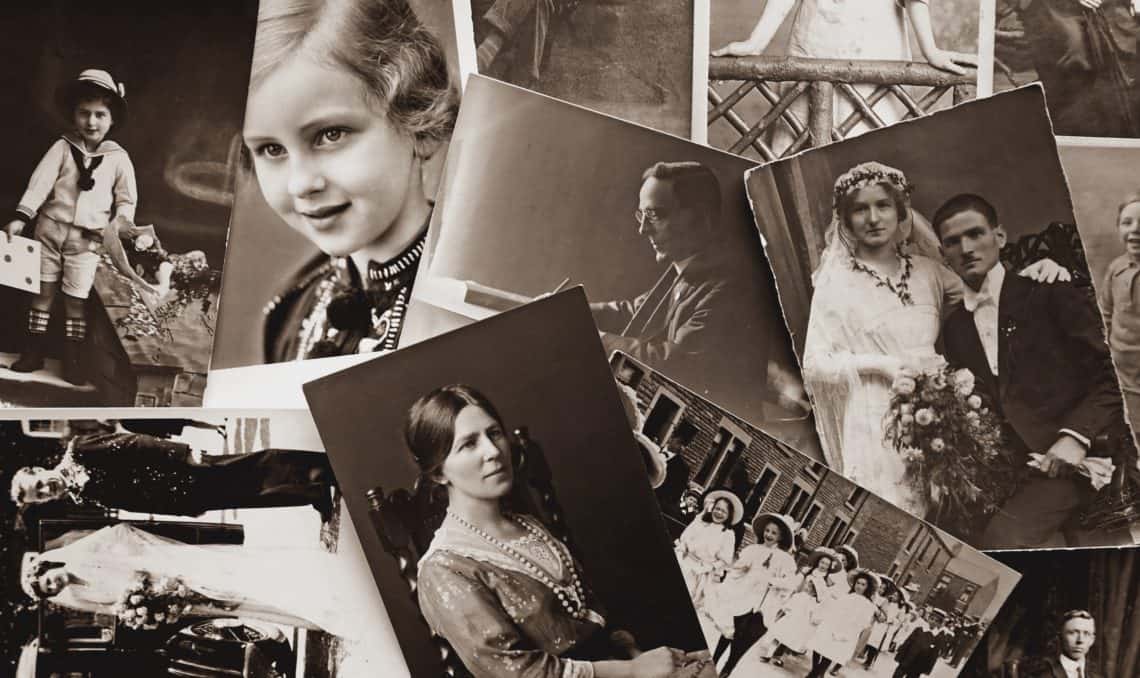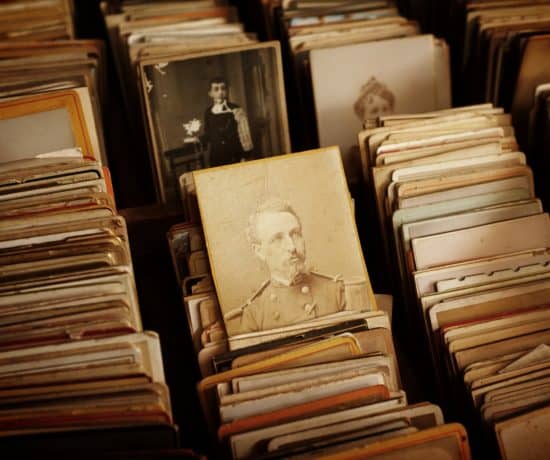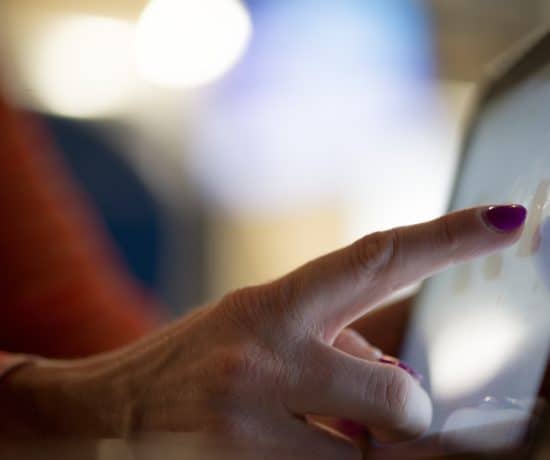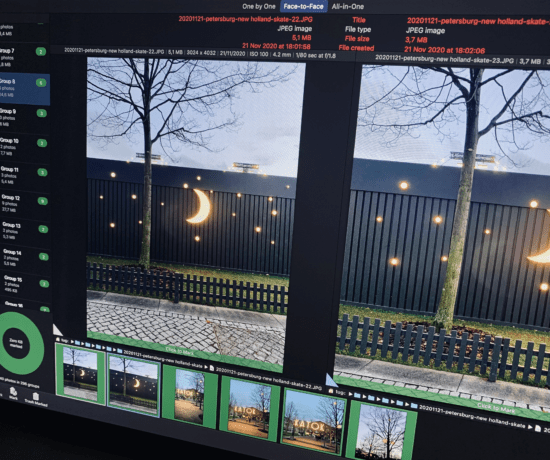In today’s blog post, we’re discussing a common dilemma – being able to identify people in old photos. While there are varying techniques out there, I have found two that work really well (genealogy work and facial recognition), and that’s what I’m sharing with you here! Read on, internet pal! And let me know in the comments what techniques have worked for you! Plus, don’t forget to sign up for our upcoming workshops, The People Index, and Metadata for Genealogy!
Years Later …
It’s a classic dilemma in the family history world. You find an old photos with a face you’ve never seen before, you see the family resemblance, but you can’t quite place to the person is, or how the person is related to you. If there was only someone who knew the answer…
Well, guess what? Someone did know the answer. Only they never shared it with you. They didn’t write it down. They didn’t pass the information on. And now that information is gone. It’s tragic, and it happens more than it should in our industry, which is why my company is on a mission to stop it.
If You Know Something, Pay It Forward
We cannot allow ourselves be the weak links in our family trees because we know better now. We must make a point of writing things down, and passing on all of this wonderful information on to the next generation. It’s our duty. Not only will it benefit our descendants tremendously, but it will also ensure that your own legacy is protected. I know this from experience because family history changed my life, and in this post, I explain exactly how my ancestor helped put things in perspective for me. His life story had a tremendous effect on me, and I want the same for you and your family members, now and in the future. There’s no better or more thoughtful gift.
Two Good Strategies
So this begs the question: if you are stuck with unknown photos and the person who knew is no longer alive or available to ask, what do you do?
Well, there are a two good strategies you can try:
1. Genealogy Research a.k.a. Detective Work
2. Facial Recognition
Both of these strategies work really well, but you have to have a bit of luck. You see, there are a few things that have to line up for you, including coming across preserved genealogical records (not all places have archives that are intact) and having other photos to use for comparison (sometimes they just don’t exist). If not, you have no source information to work from, and that makes it almost impossible.
Strategy #1 – Putting on Your Detective Hat
Researching your family history is one way to try and figure out who that person in the photo is, but it can take some time. By combining historical documents with the clues in the photos, such as clothing (to place the style in an era), dates (if there are any), studio stamps (to identify the location), and your tree (to see who was alive at the time), it’s possible to eventually figure it out. It takes a bit of diligence, and if you’re missing even one piece of the puzzle, for examples if someone hails from mom’s or dad’s side, it can be downright impossible to discover the truth. But it’s worth a shot.
Strategy #2 – Running Facial Recognition
Another way to gather clues is by running the unknown photo through facial recognition in a well indexed family archive. The AI (Artificial Intelligence) will look for similar features and try to give you hints as to who the person might be, or who the person be related to in your archive. However, the results will only come close if you have good enough photos of other people in your database that are actually related, and the program’s AI is decent.
I have actually had quite a bit of success with this approach, especially when trying to identify people over the span of a lifetime. Sometimes you have photos of an older person, and you might not realize that you have that same person in other photos, only younger (or vice versa). Babies are another example. Lots of babies have similar features, so it’s a lot harder to identify them compared to photos of them as adults. You’d think that it’d be easy to spot similarities like this with the naked eye, but it’s actually quite difficult to pick up on. AI usually does a better job.
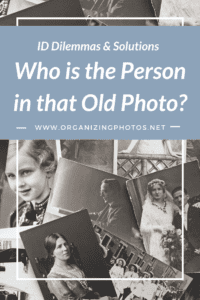
I’m a Perfect Pinnable!
Upcoming Workshops: The People Index & Metadata for Genealogy
To help our clients solve the “unknown” photos dilemma for future generations, we have plenty of educational opportunities. Naturally, there is our masterclass DPO PRO, but we have also several upcoming workshops that will niche down specifically into this topic.
This Saturday, May 21st, 2022 at 3 PM Central US time, we have our workshop The People Index which will be all about creating a non-technical and visual manual to accompany your family history archive. We only have a few tickets left, so make sure you register today if you’d like to attend!
Then, during two weeks in October, we will dig into Metadata for Genealogy, including discussing naming conventions for consistency as well as how to use metadata as a brick wall buster. Strategy #2 (from above) regarding facial recognition will be one of the topics! In fact, there are plenty of ways to use AI and other metadata for genealogy to solve mysteries, so I can’t wait to dig more into this with all of you!
Both our masterclass and our workshops are open for enrollment, so register early to reserve your spot! We hope to see you there!
Remember to Help People Remember
If there is one thing that you should take away from this blog post, it’s this: please don’t assume that what you know isn’t important enough to document! It’s far from the truth!
People always assume that “it’s obvious” who that person in that photo is, and that may be true now, but it won’t always be. Fifty or 100 years from now, it’ll be very far from obvious, and if you take the time to help your descendant by identifying people now, they will be eternally grateful. I’m sure of it.
Featured Photo Courtesy of Suzy Hazelwood

